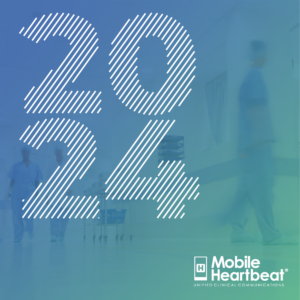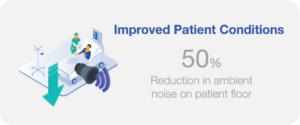As a leader in the communication and collaboration space for over a decade, Mobile Heartbeat has our finger on the pulse of healthcare technology. Over the years we’ve evolved to provide more accessible and reliable communication tools to clinicians, to better help them collaborate to advance care.
When I sat down with Healthcare IT News recently to discuss trends in the clinical communication and collaboration (CC&C) industry, I felt it was important to review how the technology has evolved, in order to fully realize where it’s headed.
From Secure Texting to Unified Communication
The beginning of our industry was marked by an emphasis placed on secure messaging. Clinicians had access to desk phones, pagers and desktop computers, but healthcare operations lacked an elegant way to send and receive simple messages. Early CC&C vendors rushed to provide a messaging solution that would protect patient information as healthcare workers increasingly gained access to smartphones.
But with the transition to smart devices came another concern, what we affectionately called utility belt syndrome. Clinicians had to carry so many different devices, each to send and receive different modes of information. It became clear that CC&C needed to evolve, to take advantage of smartphone capabilities.
We know that messaging is not a catch-all communication tool. For urgent situations and other workflows, clinicians need to be able to make and receive calls, even when they’re not at a desk or a patient’s bedside. Developing a CC&C solution that encompassed calling and secure messaging was the beginning of the truly unified CC&C application.
What began just as a secure messaging tool became a full-scale platform, including calling, paging, broadcasts, real-time enterprise directory and custom integrations to maximize investments in existing infrastructure, like EHR and nurse call, with each patient’s care team aat the center.
The Transition to the Cloud
This more robust functionality among CC&C solutions offered an elegant way for clinical end users to unify all their communications to a single device. But as healthcare organizations implemented more and more technology, these infrastructures became complex to set up and maintain.
Enter the cloud. Cloud-hosted communication and collaboration solutions create a unique opportunity for healthcare organizations to maintain a leaner infrastructure, with quicker time to deployment and wider accessibility across ancillary and outpatient centers.
A cloud-hosted communication platform also facilitates seamless integration with other cloud-hosted systems and solutions. For instance, if your organization leverages cloud technology for the EHR, consider deploying a cloud-based communication system that fully integrates with the EHR. In this case, the integration would support charting and reporting workflows and create an environment wherein clinicians don’t need to log into several different apps to accomplish a single task.
Mobile Heartbeat recently announced a new cloud-based clinical platform, called Banyan, to maximize customer investments in existing mission-critical systems. With our partner Microsoft’s cutting-edge resources, including Azure Communication Services, the Banyan Platform promises a next-generation experience for healthcare users and administrators.
As this technology continues to develop, cloud-based communication and collaboration solutions will become a more attractive option for technology teams, administrators and clinicians alike.
For more information about the future of Cloud for Healthcare, listen to the podcast, or contact a member of our clinical mobility team.




